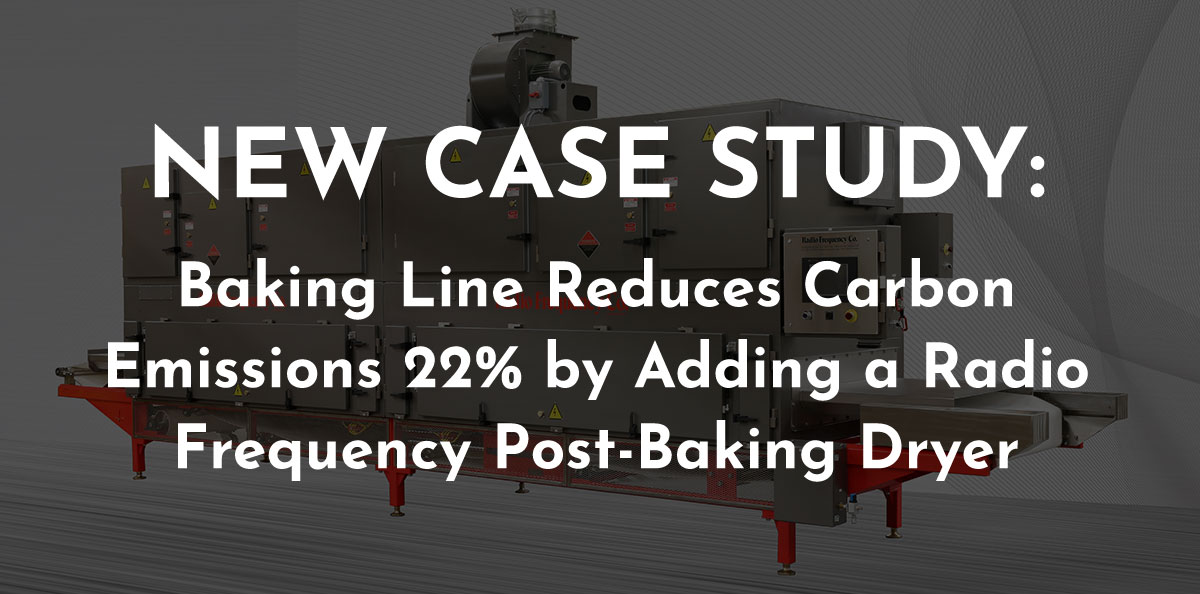
28 Mar Baking Line Reduces Carbon Emissions 22%
Baking Line Reduces Carbon Emissions 22% by Adding a Radio Frequency Post-Baking Dryer – A Case Study

Environmental studies show that carbon emissions from food production alone could use up all of our world’s CO2 budget to stay within the goal of a 1.5°C or 2°C global temperature rise. However, in the baking industry, there are a range of opportunities to avoid this benchmark and move one step closer to, “net zero.” Radio Frequency Company, located in Millis, MA has prepared the following case study:
Conventional baking ovens (those which apply heat to the outside surface of a product) are notoriously inefficient when it comes to removing moisture in the final stages of baking. This happens because, as a product develops loft and crumb structure, it becomes less of a thermal conductor and more of a thermal insulator which inhibits heat penetration toward the center of a product. Aggravating this problem is the amount of external heat applied to a product, in the final stages, must be limited to avoid scorching and over-coloration. This final stage of baking/drying often requires as much as one-third of the oven length or one-third of the total bake-time. By adding an RF post-baking dryer, band speeds can be increased up to 30% on average.
Because water is a polar molecule, it is extremely receptive to radio frequency (RF) heating. When exposing a product with an uneven moisture content (moist interior/drier exterior) to a rapidly oscillating RF field, the energy will preferentially target and remove moisture from the moist interior without overheating or discoloring the exterior surfaces. Also, because RF is a direct form of heating, the drying is 100% efficient, requires no warm-up time, and significantly reduces bake-time for most products. By eliminating this final drying requirement from a 300’ long DGF/Convection oven, the addition of an RF Post-Baking dryer achieved a significant reduction in carbon emissions. The following case study was observed and proven. (full study available upon request)
Combining Conventional Heating and Radio Frequency Heating/Drying in the production of a popular snack cracker:
- Natural gas consumption of a 300’ long DGF/Convection Oven: 6,300 cubic feet of gas to produce 6,250lbs of baked product per hour. 6,300 / 6,250 = 1.008 cubic feet of gas per pound of product produced.
- With the 22% increase in band speed provided by the efficiencies of RF drying, the same 6,300 cubic feet of gas, is now able to produce 8,000 pounds of product per hour (+22%): 6,300 / 8,000 = .78 cubic feet of gas per pound of product. A 22% reduction in greenhouse gas per pound of product produced.
Full details of this study are available upon request. Please refer inquiries to Lisa Mitchell by emailing here.





Sorry, the comment form is closed at this time.